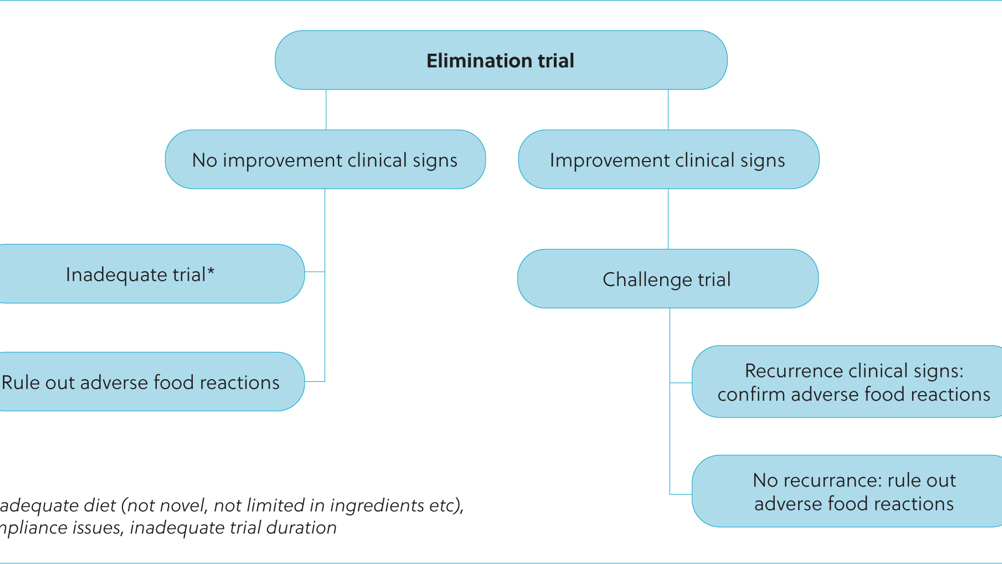References
Dietary options for diagnosis of cutaneous adverse food reactions

Abstract
Diet is critical for the diagnosis of cutaneous adverse food reactions in dogs and cats. The diagnostic process consists of the elimination trial, where a diet the patient has never been exposed to or with reduced allergenicity (elimination diet) is fed for a number of weeks exclusively. If clinical signs improve, this is followed by a challenge phase to confirm the diagnosis and identify the food triggers in each patient. Therefore, choosing the right elimination diet is very important in obtaining a reliable diagnosis and deciding on the best feeding plan for long-term management. This paper reviews the different options for canine and feline elimination diets and discusses their pros and cons.
Cutaneous adverse food reactions manifest in the skin. The main clinical sign is pruritus, and reactions can involve the immune system (food allergy) or not (food intolerance) (Mueller and Unterer, 2018). Dietary management is important for both the diagnosis of this condition and for long-term management. The latter consists of feeding complete diets avoiding individual triggers, which can be identified during the diagnostic phase.
The gold standard diagnostic of cutaneous adverse food reactions consists of an elimination and challenge dietary trial (Jackson, 2001; Mueller and Unterer, 2018; Paterson, 2021) (Figure 1). The elimination phase consists of exclusively feeding the patient a diet that they have never been exposed to or with reduced allergenicity (‘elimination diet’) for at least 8 weeks (Olivry et al, 2015). The use of steroids at the start of the trial has been proposed to be useful in reducing the length by controlling the initial inflammation and pruritis (Favrot et al, 2019). After that, if the pruritus has not improved, cutaneous adverse food reactions can be ruled out and further investigations are required. The patient could still have a cutaneous adverse food reaction if the elimination diet was not adequate (for example, not novel for the patient, or containing undeclared ingredients), not fed for long enough or if there were compliance issues, such as use of treats, flavoured supplements, food scraps and the like. Those patients whose pruritus has improved would move to the challenge phase, where the patient is exposed to different ingredients or the previous diet. Using individual ingredients instead of a complete diet is helpful, as this will allow identification of the triggers to avoid. Multiple ingredients should be offered at one time, as patients can react to more than one ingredient (Jeffers et al, 1996). If the clinical signs reoccur, a cutaneous adverse food reaction can be confirmed.
Register now to continue reading
Thank you for visiting UK-VET Companion Animal and reading some of our peer-reviewed content for veterinary professionals. To continue reading this article, please register today.

